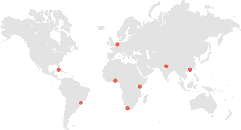The Chandigarh College of Architecture was established as part of the ‘Chandigarh Project’– the most significant and daring experiment in architecture and urban planning of the 20th century. As such, the driving force and mission of the college is also to fulfill the same ethos.
Located in the Educational Zone of the city, the Chandigarh College of Architecture (CCA) was established on 7th August 1961 at the behest of Le Corbusier. The College is housed in a sprawling campus of 9.5 acres and has separate hostels for boys and girls. It offers a Bachelor of Architecture program of five years duration with an annual intake of 40. The college is affiliated to Panjab University, Chandigarh and its B.Arch. course is approved by the Council of Architecture, India. The College regularly conducts joint studio programs with students from leading International architectural institutions. CCA is a premier institution having highly qualified Architect-educators most of whom are having post-graduate qualifications.
To make its mark at the national as well as international level, the college uses ‘the Chandigarh Experiment’ as an open text book for its teaching philosophy and methodology. It draws heavily upon from the work done by the great master architect-planner and his associates. As the growth of the city is an on-going process, the college uses every opportunity to take up real / live situations in the city to undertake studies, analyze them and use conclusions drawn from such ‘live’ case studies of architecture and urban planning. These are done in the form of seminars, elective subjects, case studies for thesis projects and also as on-site examples of evaluating architectural and planning aspects of the city. As far as possible, these are documented and presented both at the national and international forums either as papers by faculty or studies by students published in various journals and presented at various architectural forums.
The Aditya Prakash Foundation, is a family foundation, dedicated to supporting research and study of contemporary Indian architecture and urbanism, particularly modern architecture and sustainable urban design. The AP Foundation is inspired by the life and works of Aditya Prakash (1923-2008), a first generation Indian modernist. Aditya Prakash was an architect, urbanist, artist, sculptor, furniture designer, published writer, academic and above all a humanist. He believed in the integration of knowledges in service of the built environment, and was amongst the first advocates for ‘self-sustaining human settlements’ in India.



